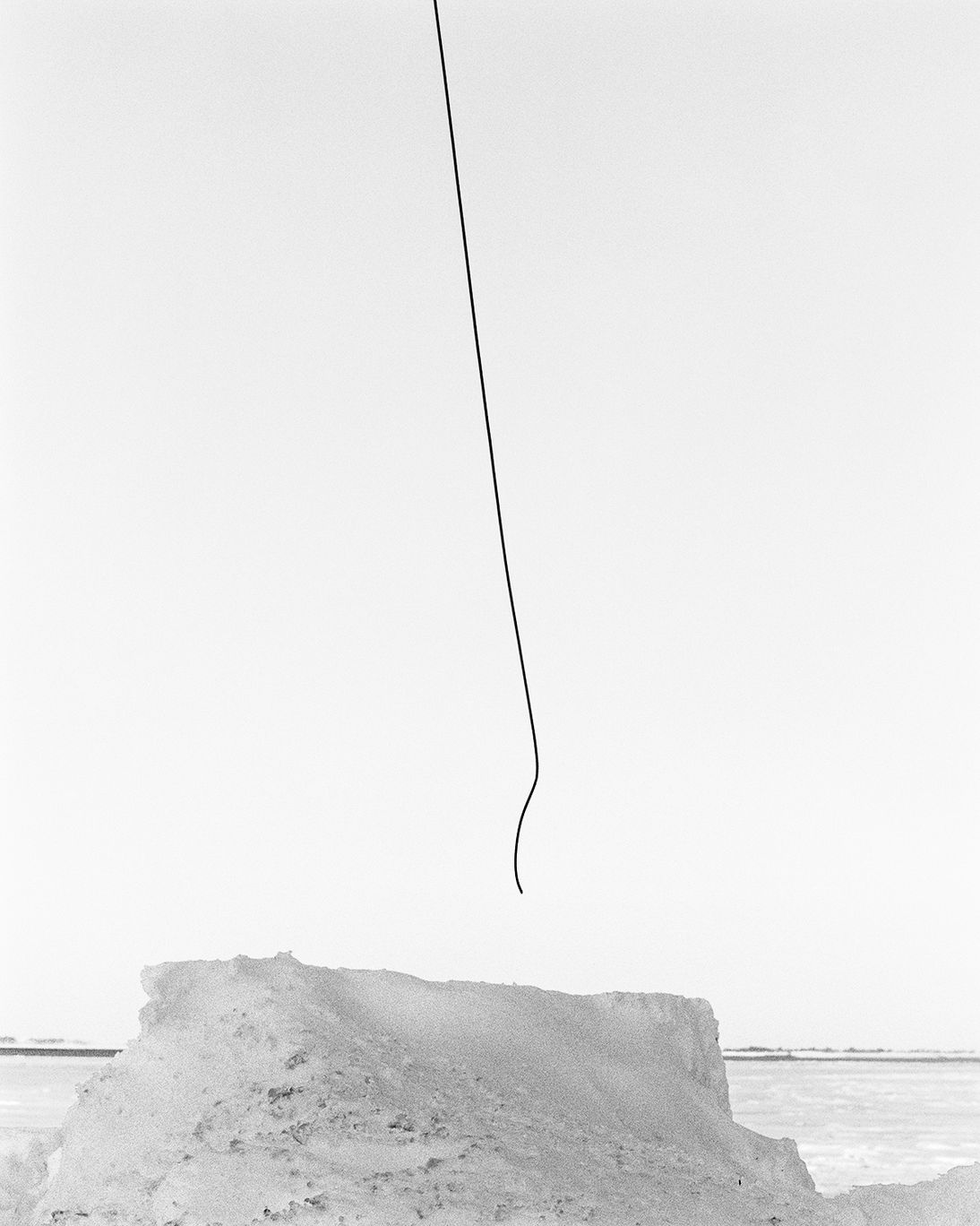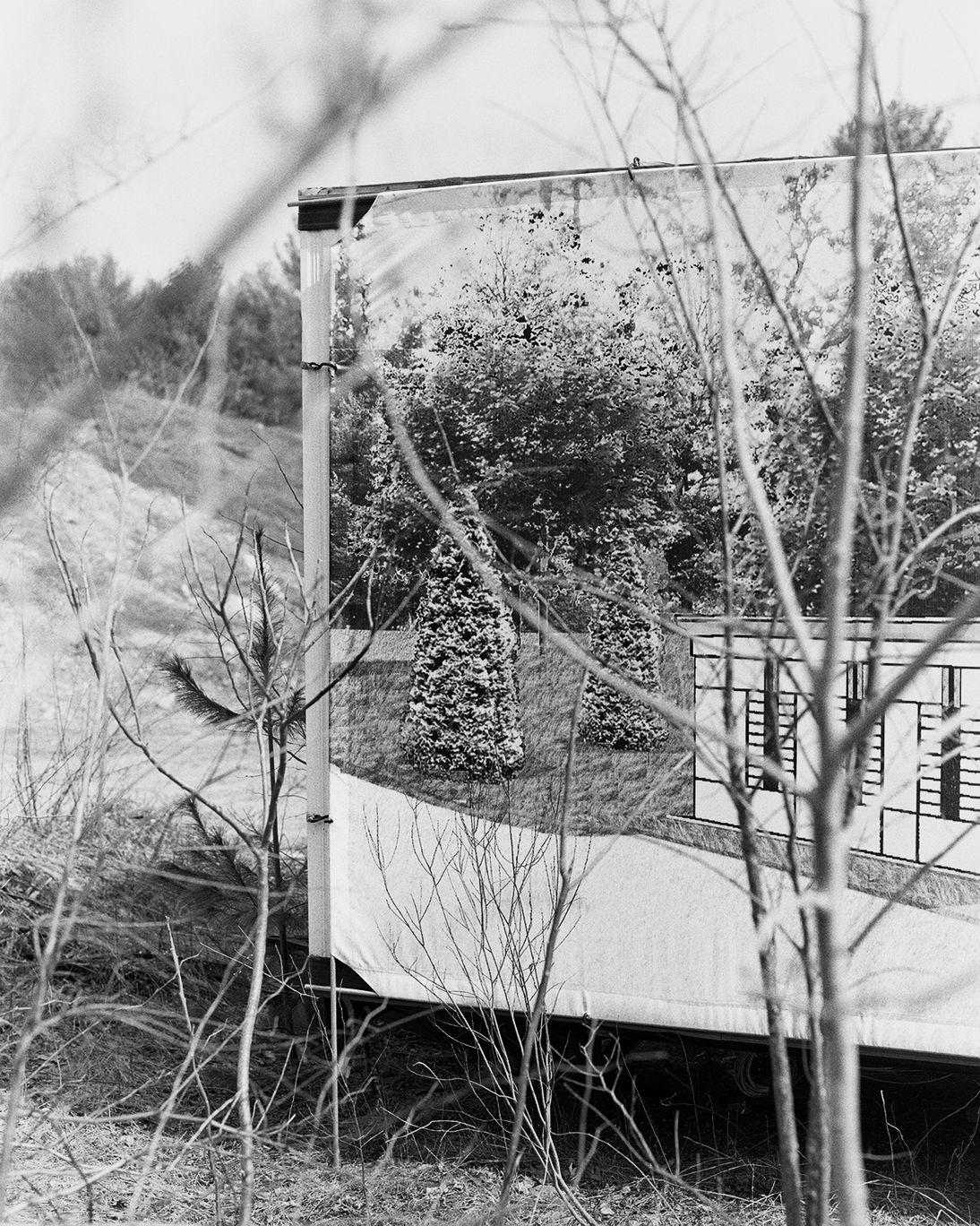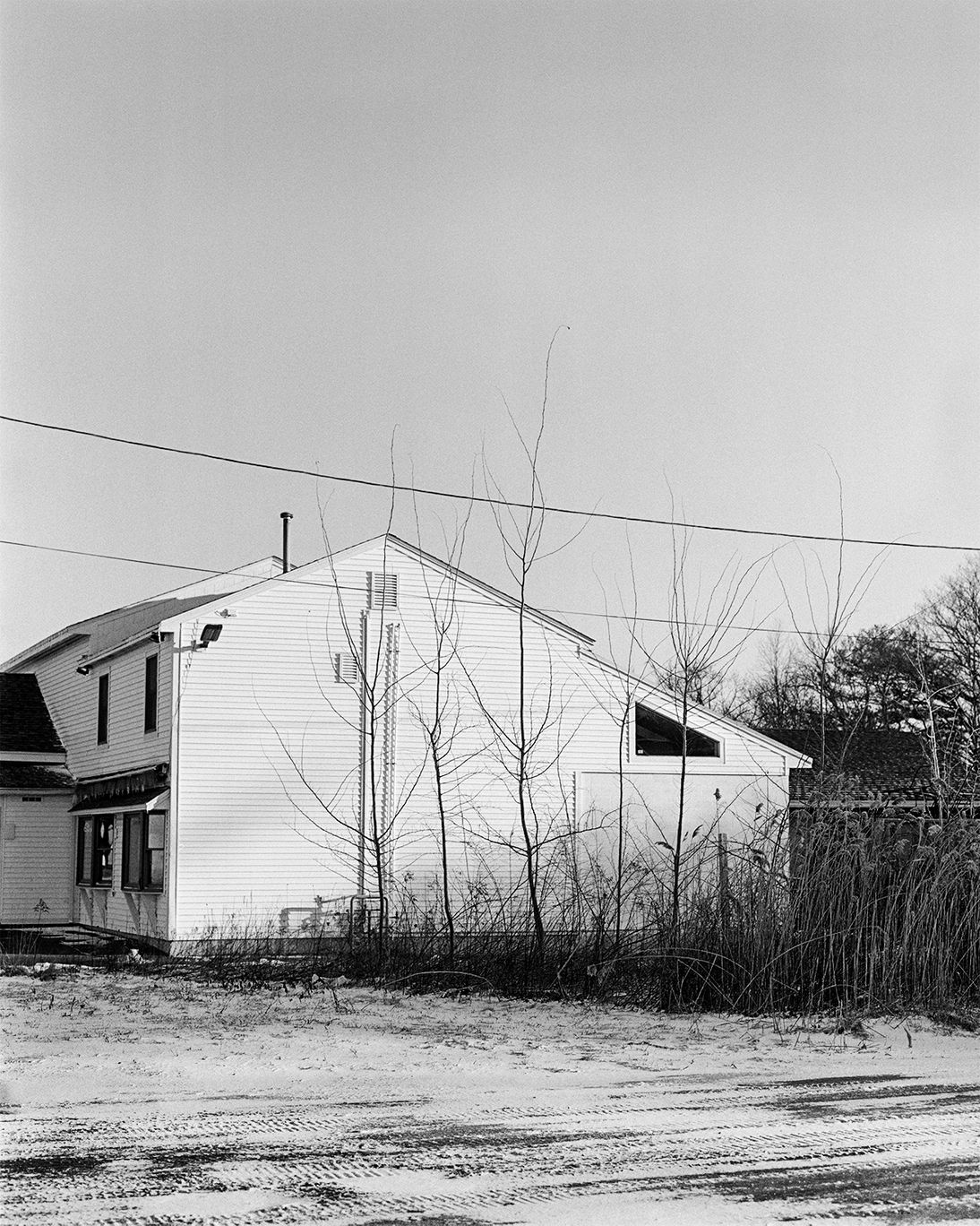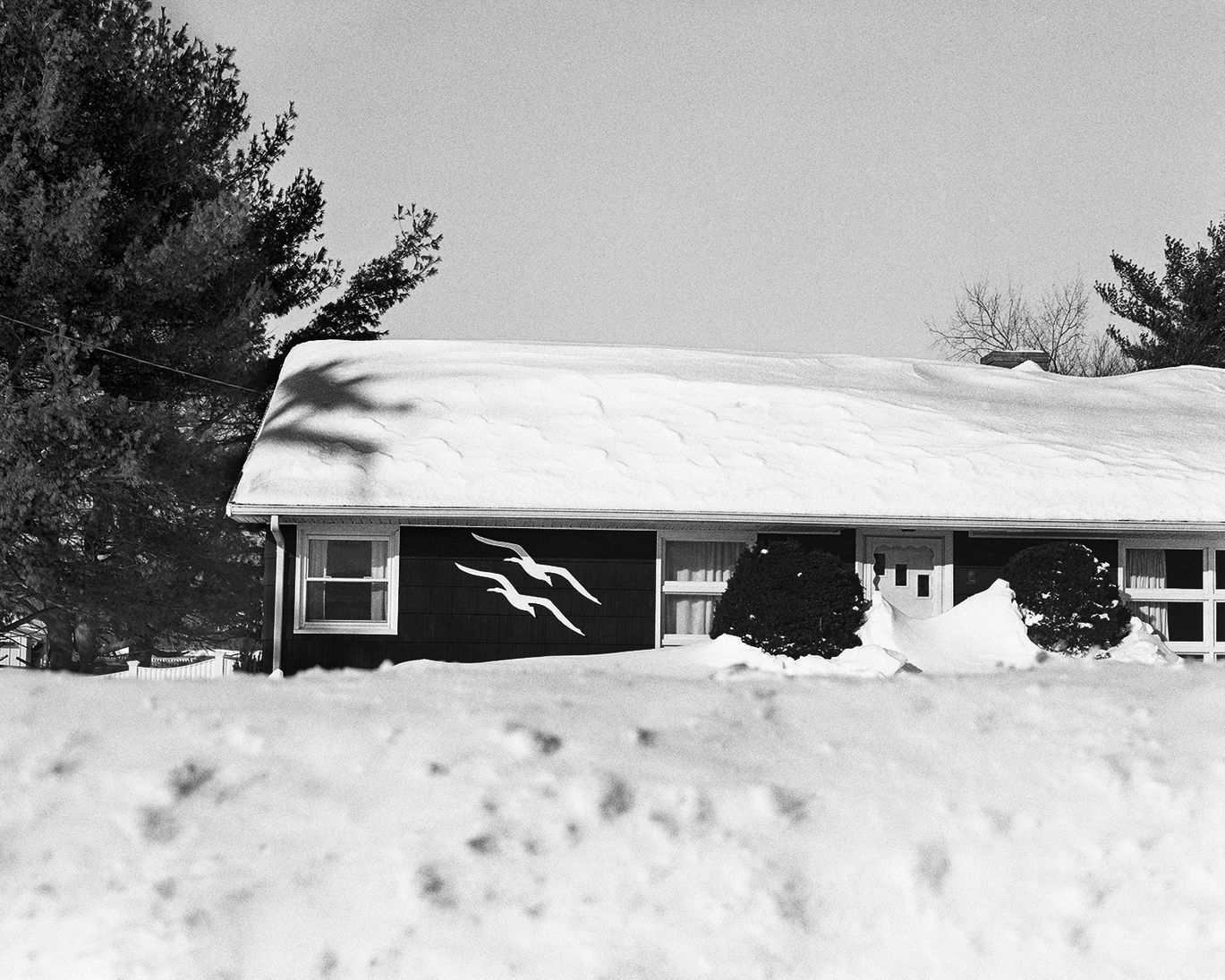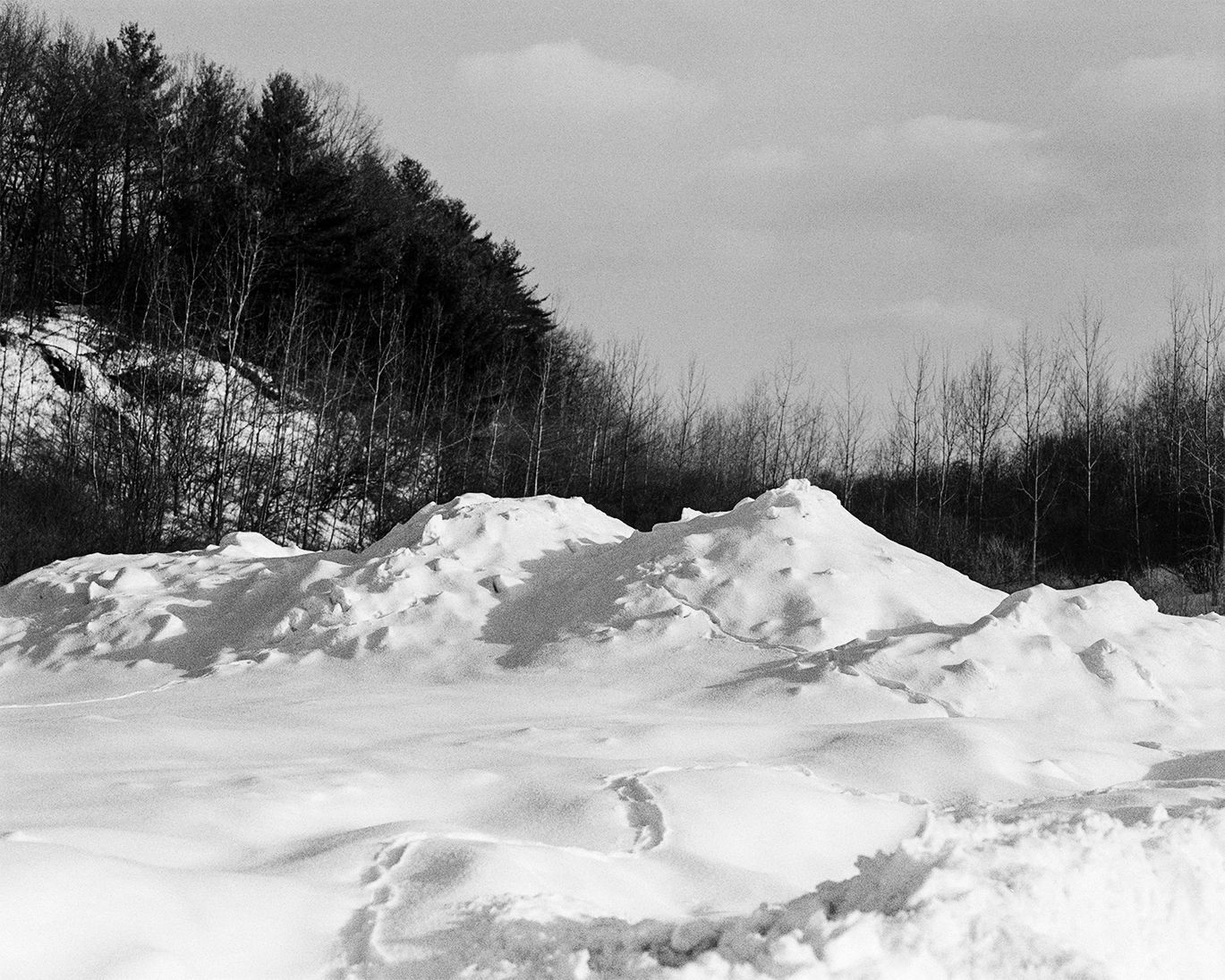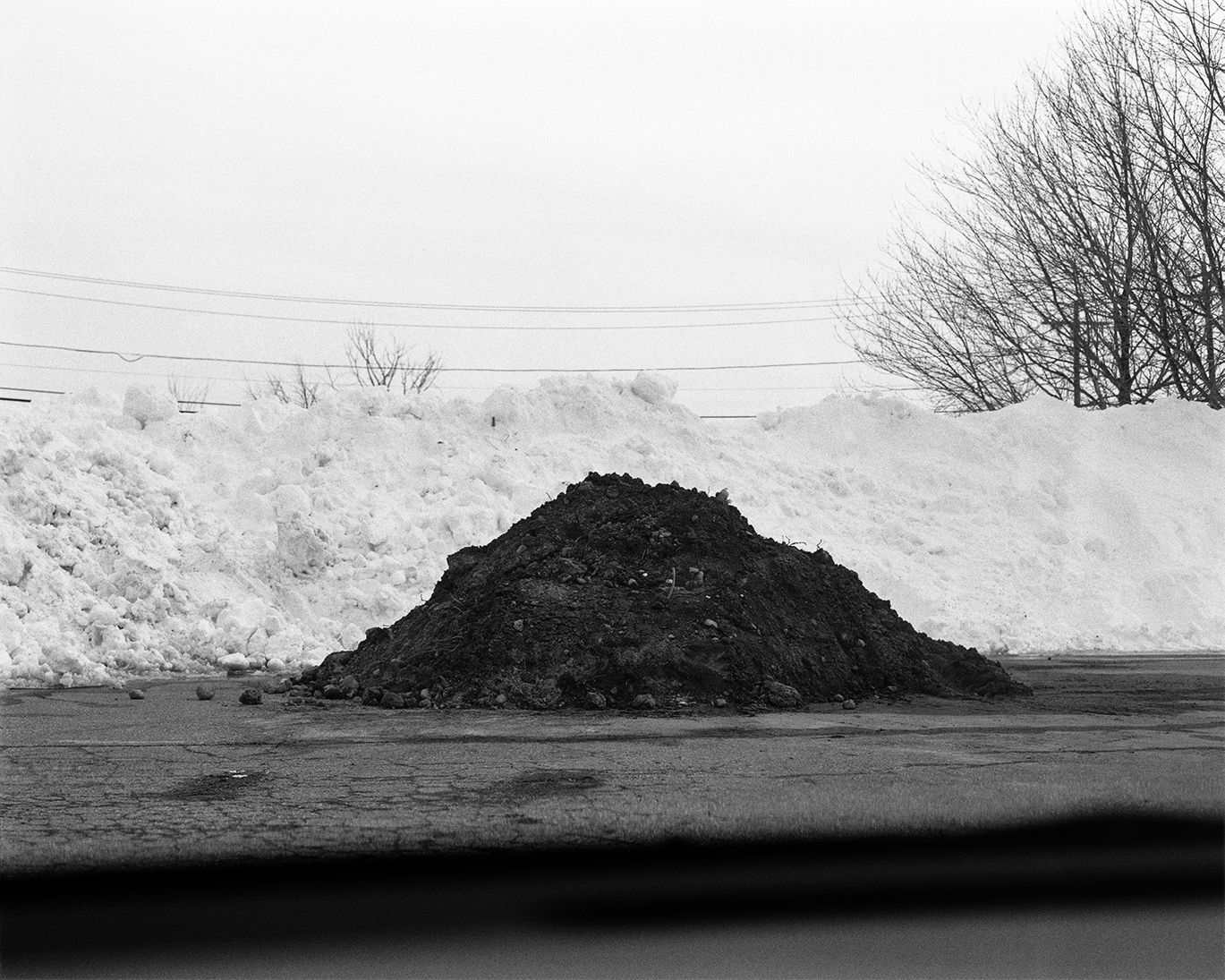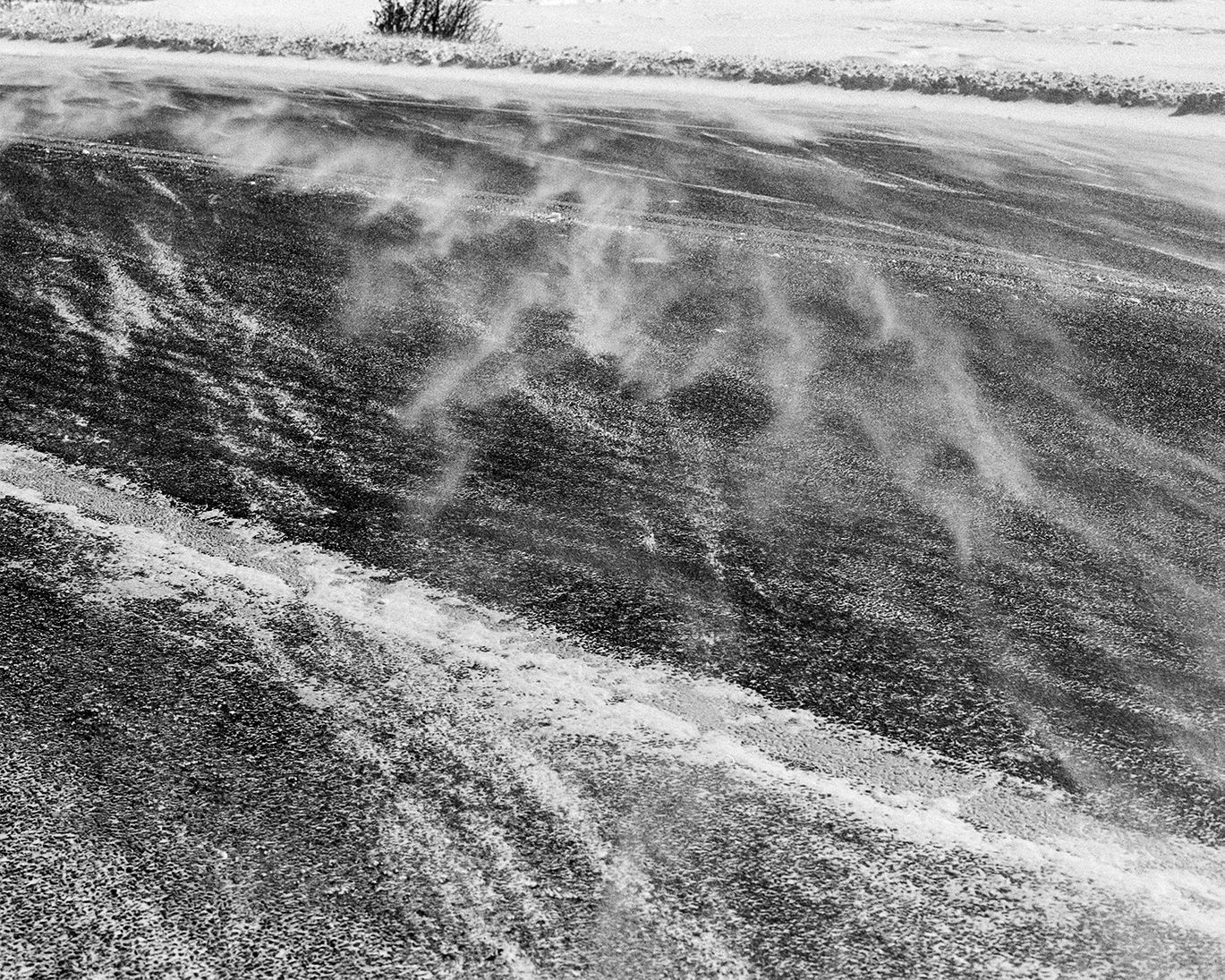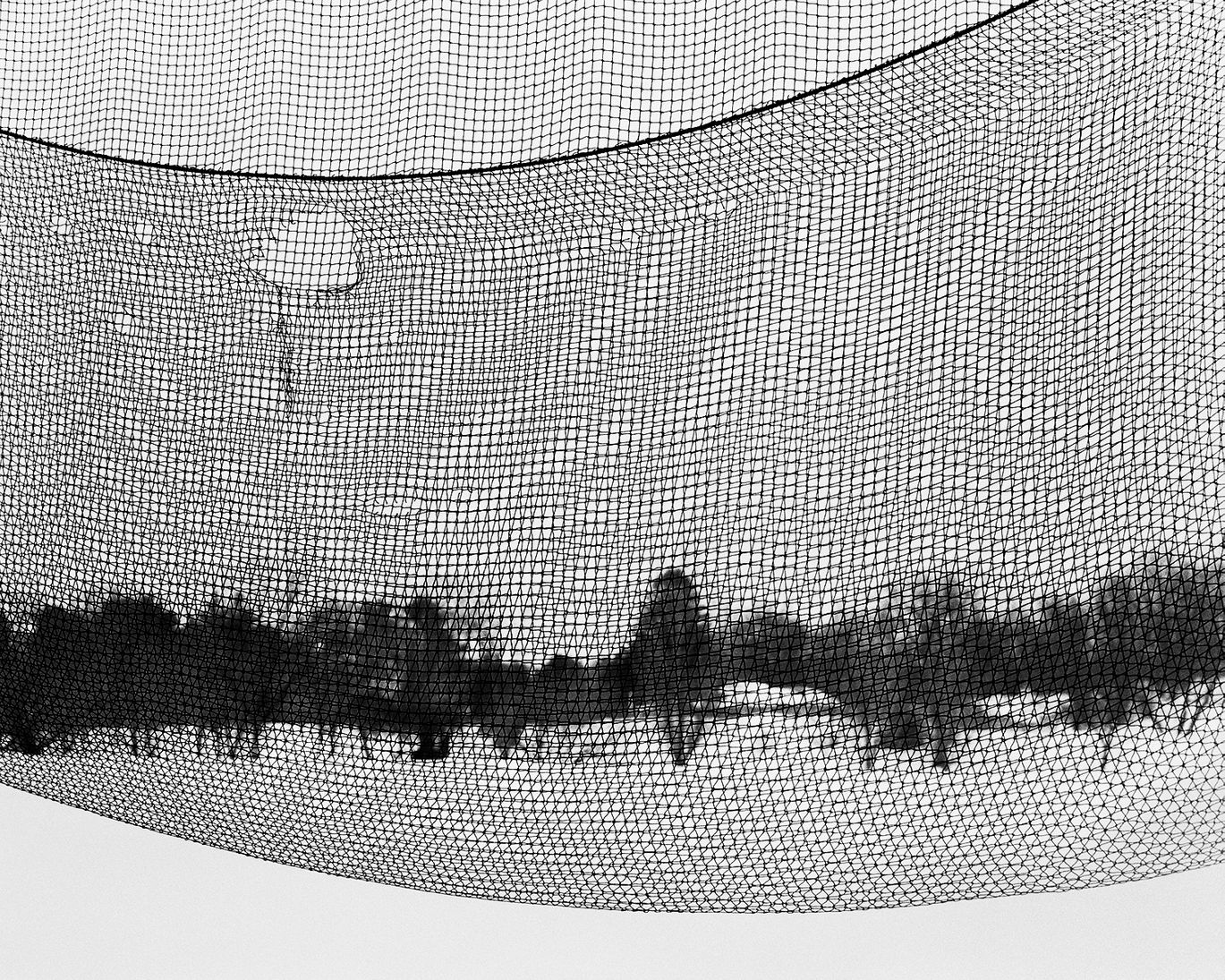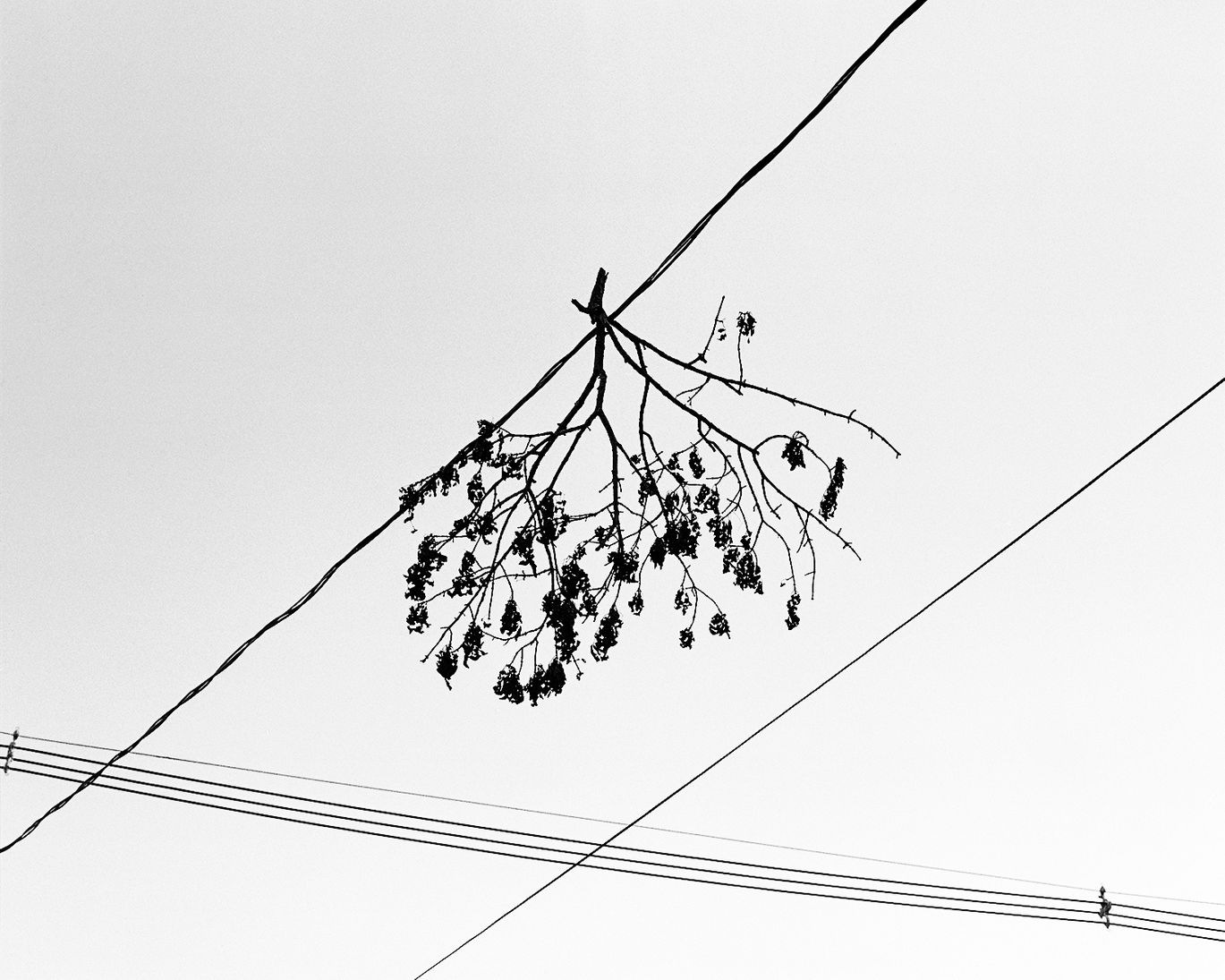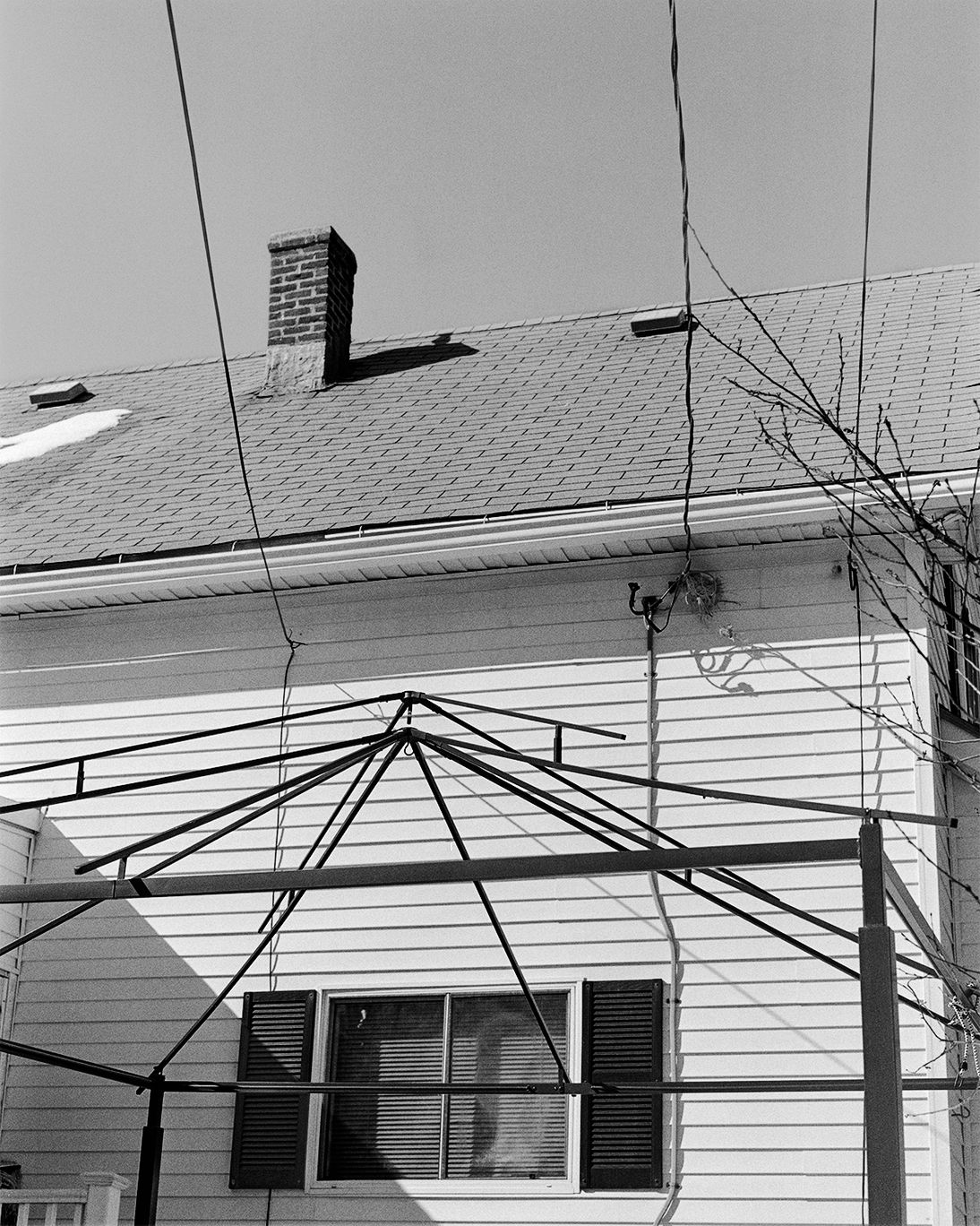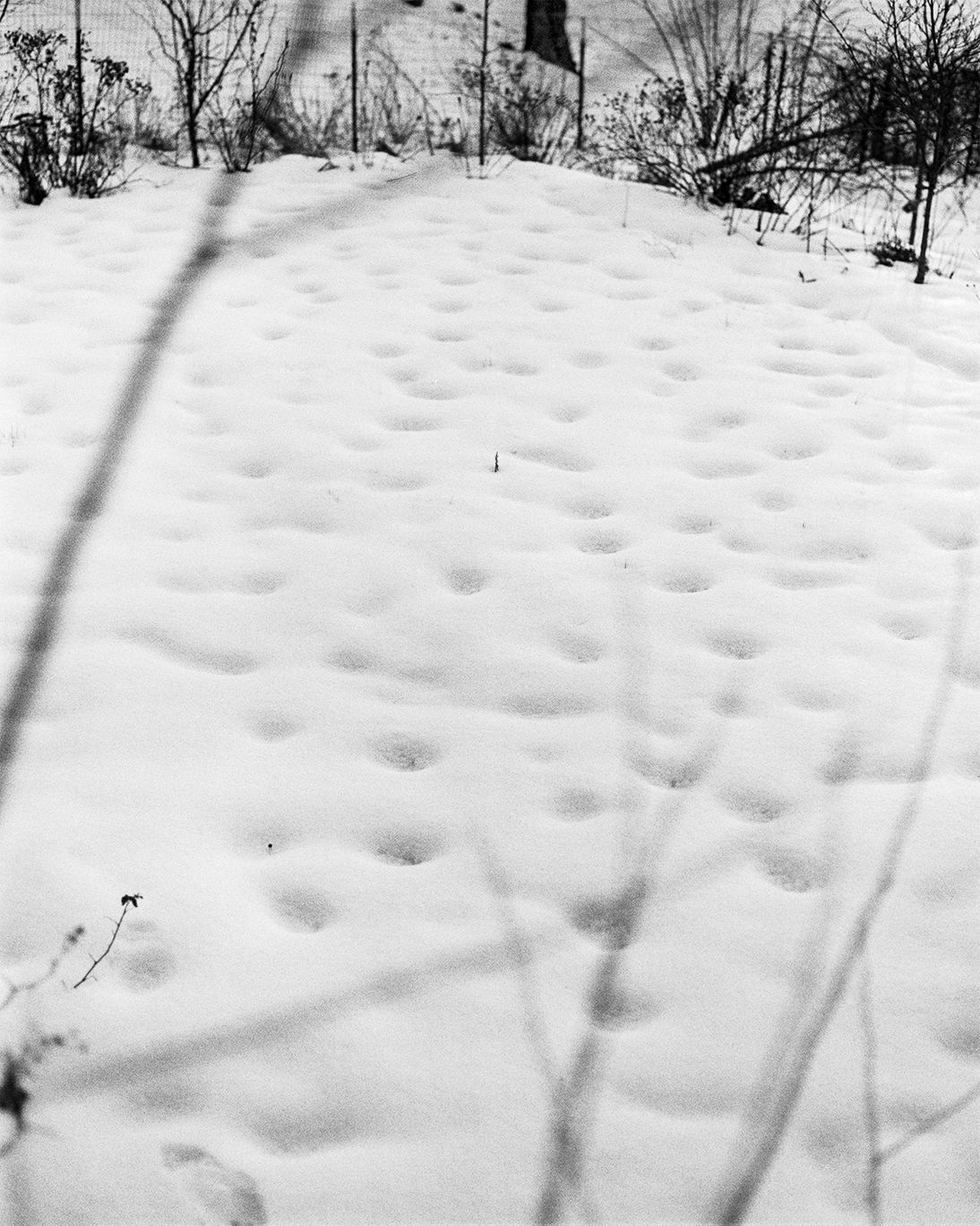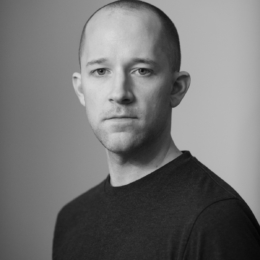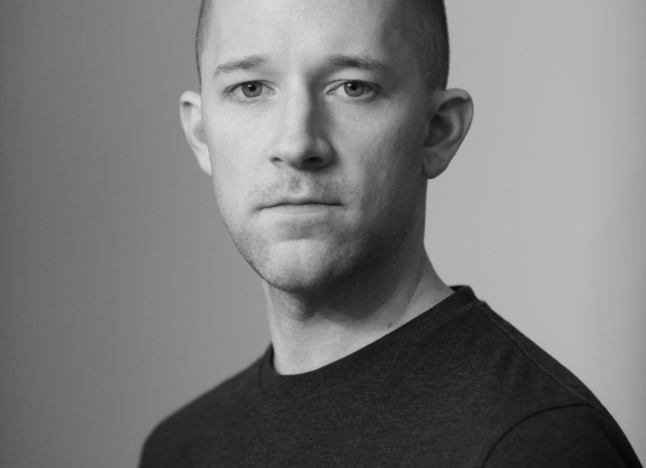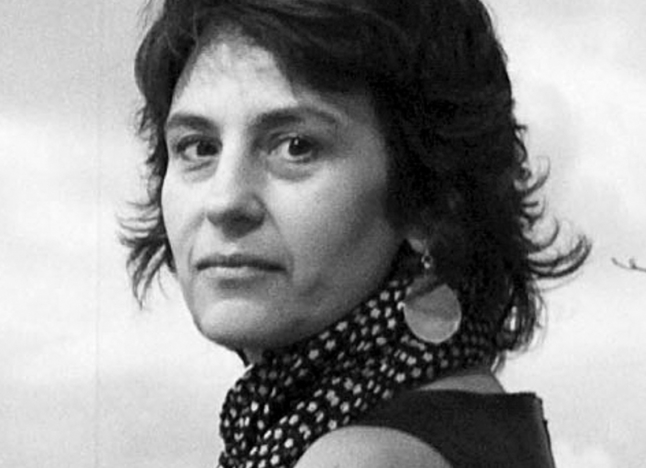Angal Field
Artist Feature
Every week an artist is featured whose single image was published by Der Greif. The Feature shows the image in the original context of the series.
Peter Morse - Hangnail
Feb 20, 2019
My ongoing project Hangnail is rooted in the peculiar experience of living through prolonged winters, when domestic and public spaces take on a stark, surreal character. I began making the pictures in 2015, when Boston received over 250 cm of snow—more than double the average for our region. For months, the only time I saw my neighbors was when they let their dogs out, and even then, I rarely saw their faces. By March, the sidewalks were covered with walls of packed snow so tall I could barely see over them.
I started paying close attention to the ubiquitous negative space, colorless skies, and accumulated snow and how they revealed patterns, linear gestures, and moments of animation and suspension. Going out to wander and photograph is a way for me to carve some poetic space out of this strange, claustrophobic landscape. The pictures create a kind of dream world for me, a rendering that is perpendicular to my daily, lived experience but that still feels vital and mysterious.
Artist Blog
The blog of Der Greif is written entirely by the artists who have been invited to doing an Artist-Feature. Every week, we have a different author.
Published in:
»Guest-Room Diane Dufour«
Form
Feb 25, 2019 - Peter Morse
Winter is already nearly monochromatic, so shooting in black and white feels very natural to me. It’s not quite the same leap to abstraction that it is during the warm, colorful summer months. However, the grain and soft focus of fast medium format film do render space in a unique way. The grain adds a rough texture and a sense of being disconnected from the present. I’ll often opt for shallow depth of field to push the eye through the frame, beyond the foreground barrier that pops up in many of these winter scenes. Finally, I see the many linear elements as unconscious gestures, suggesting a kind of animation or characterization of the inanimate subject matter.
After Bachelard
Feb 23, 2019 - Peter Morse
I almost never photograph in my own home. Maybe it’s too familiar, or too comfortable. It could be that I’m blind to the quality of interior light. All the same, I resonate with the daydreaming suggested in Gaston Bachelard’s The Poetics of Space, in which he describes the nuances and intimacy of domestic spaces: the comforting, limitless strength of a wall as it recedes into its corners, or the inflated memories of the dark basement of our childhood home. He’s probably right when he says that “memories of the outside world will never have the same tonality as those of home.” At home we can find a unique kind of rest, and “the house shelters day dreaming, the house protects the dreamer, the house allows one to dream in peace.”
But daydreaming doesn’t end abruptly when we step outside. We define new spaces of intimacy everywhere we go, from which to experience all that is outside ourselves. The space might be as large as the interior of a car, or the space we take up on the bus. It might be just a few feet around us in each direction as we walk past other people in town. This is my space as I commute. This is where I go to buy things I need. This park bench is my home while I eat lunch.
When I photograph, I’m forming a daydream about a place, rooted in an image. The image creates a new space of intimacy for me, giving meaning to places outside of my own home.
“Daydreaming even has a privilege of autovalorization. It derives direct pleasure from its own being. Therefore, the places in which we have experienced daydreaming reconstitute themselves in a new daydream, and it is because our memories of former dwelling-places are relived as daydreams that these dwelling-places of the past remain in us for all time.”
(Quotes from The Poetics of Space by Gaston Bachelard, 1964 translation, page 6)
“Entrance”
Feb 21, 2019 - Peter Morse
“Entrance”
Whoever you are: in the evening step out
of your room, where you know everything;
yours is the last house before the far-off:
whoever you are.
With your eyes, which in their weariness
barely free themselves from the worn-out threshold,
you lift very slowly one black tree
and place it against the sky: slender, alone.
And you have made the world. And it is huge
and like a word which grows ripe in silence.
And as your will seizes on its meaning,
tenderly your eyes let it go . . .
—Rainer Maria Rilke
“Eingang”
Wer du auch seist: am Abend tritt hinaus
aus deiner Stube, drin du alles weißt;
als letztes vor der Ferne liegt dein Haus:
wer du auch seist.
Mit deinen Augen, welche müde kaum
von der verbrauchten Schwelle sich befrein,
hebst du ganz langsam einen schwarzen Baum
und stellst ihn vor den Himmel: schlank, allein.
Und hast die Welt gemacht. Und sie ist groß
und wie ein Wort, das noch im Schweigen reift.
Und wie dein Wille ihren Sinn begreift,
lassen sie deine Augen zärtlich los . . .
“Entrance” from Rilke’s The Book of Images
English translation by Edward Snow, 1991


